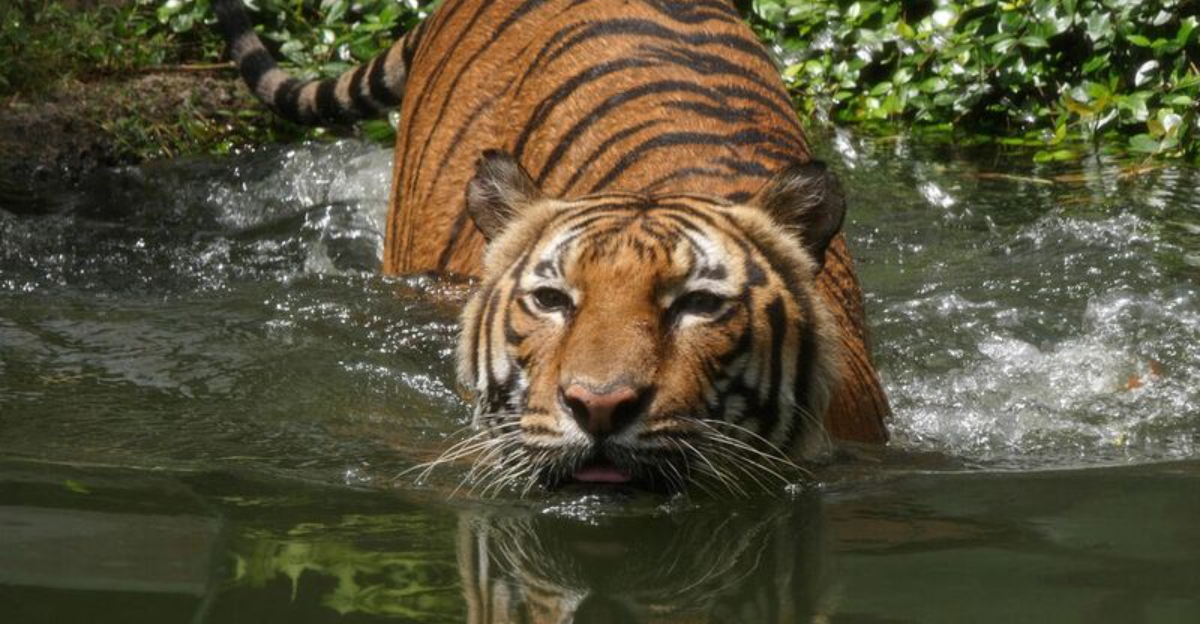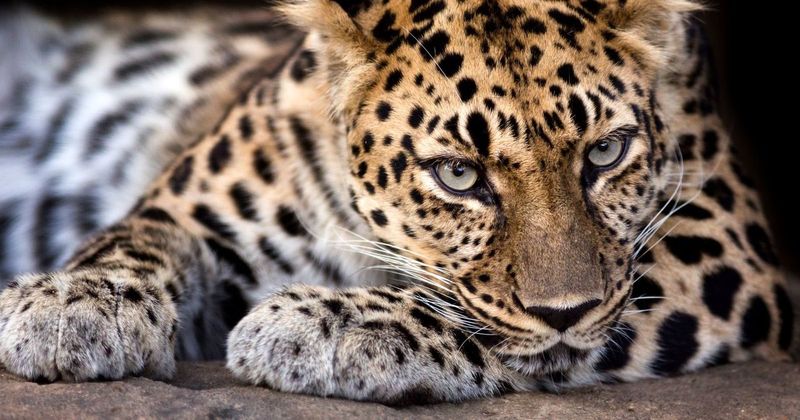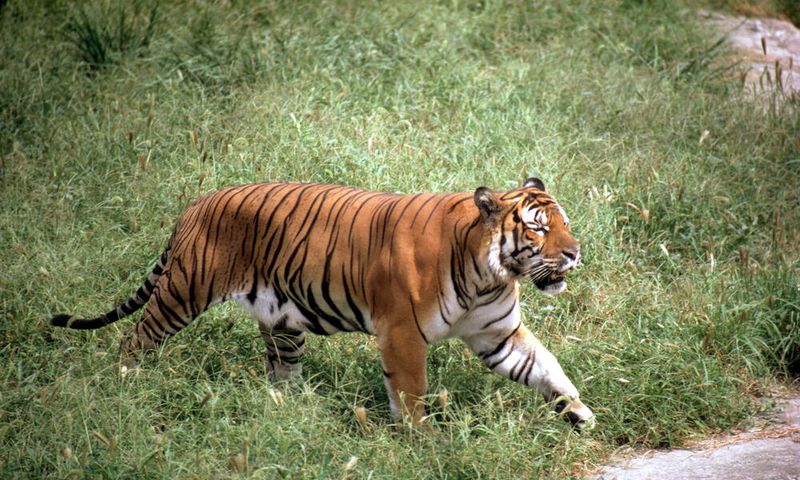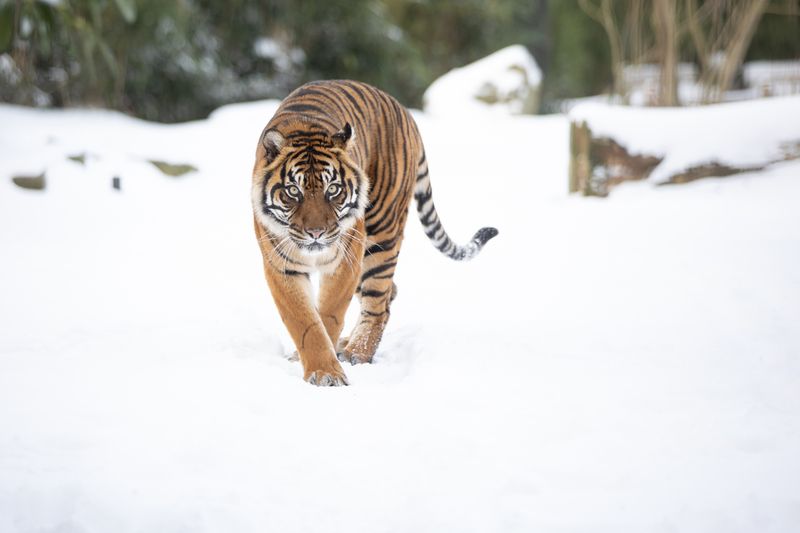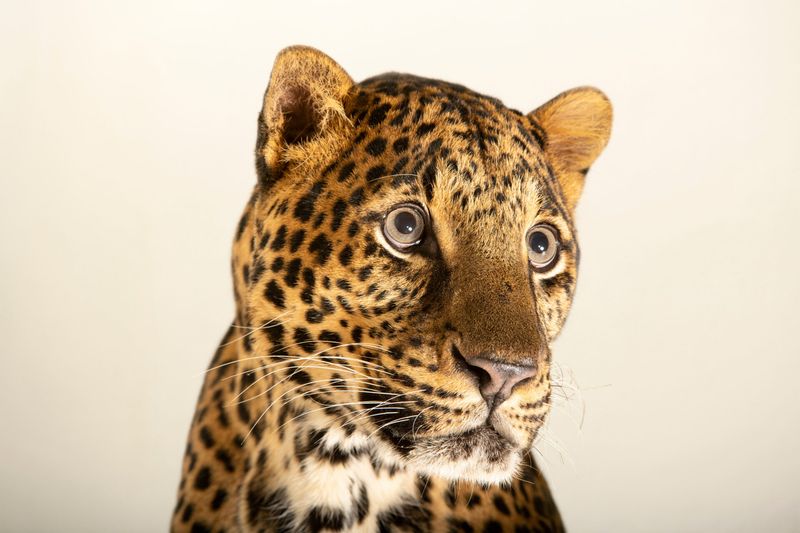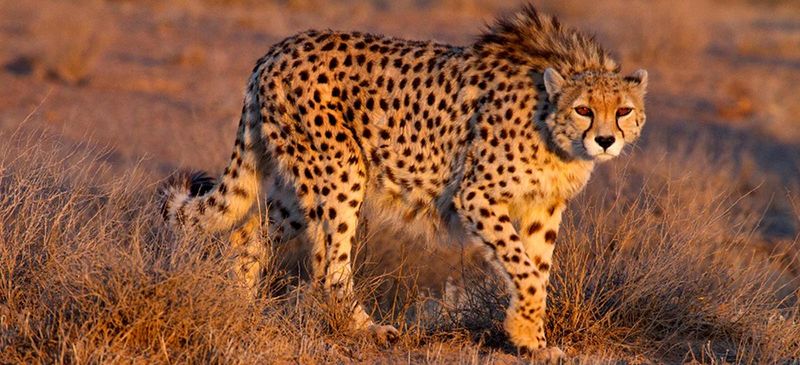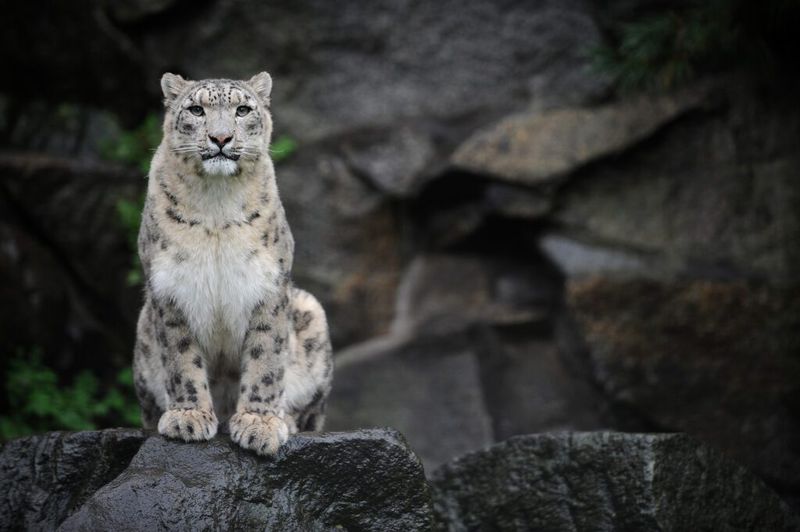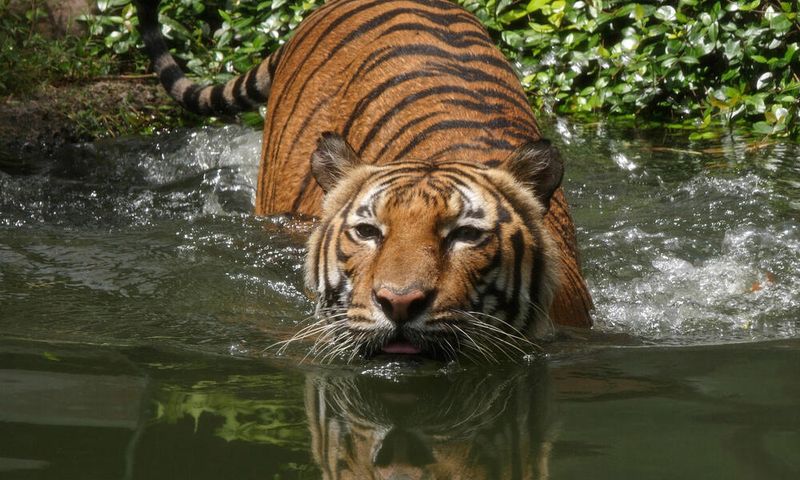📖 Table of Content:
- 1. Amur Leopard (Panthera pardus orientalis)
- 2. South China Tiger (Panthera tigris amoyensis)
- 3. Sumatran Tiger (Panthera tigris sumatrae)
- 4. Javan Leopard (Panthera pardus melas)
- 5. Asiatic Cheetah (Acinonyx jubatus venaticus)
- 6. Snow Leopard (Panthera uncia)
- 7. Iberian Lynx (Lynx pardinus)
- 8. Indochinese Tiger (Panthera tigris corbetti)
Big cats have long captivated the human imagination, symbolizing power, beauty, and wilderness across cultures. Yet behind their iconic status lies a sobering truth: many of these majestic creatures teeter on the edge of extinction. Driven by human activity—whether through habitat encroachment, poaching, or climate change—their future is increasingly uncertain.
While some big cat species like lions or jaguars still retain relatively stable populations in parts of the world, others have dwindled to critical levels. The survival of these rare felines depends not only on robust conservation efforts but also on raising awareness about their plight. These species face a perfect storm of threats, often isolated to shrinking patches of land or hunted for their bones, fur, and mythical medicinal value.
This article highlights eight of the most endangered big cats on the planet. Each of them has a unique story of survival, adaptation, and peril. From the icy terrain of the Russian Far East to the mountains of Iran, these cats are holding on—often just barely. By understanding their struggles and significance, we inch closer to appreciating the fragile balance they represent in the ecosystems they rule. The following sections offer a deeper look into each of these rare predators, outlining their environments, threats, and the urgent actions needed to save them.
1. Amur Leopard (Panthera pardus orientalis)
High in the forests of the Russian Far East roams the elusive Amur leopard, a ghostlike figure almost invisible in the snowy landscape. Known for its thick, luxurious coat—perfectly adapted to cold climates—this leopard is one of the rarest big cats on Earth. Poaching and habitat destruction have ravaged its population, leaving fewer than 120 individuals in the wild. With such a small gene pool, inbreeding further jeopardizes their long-term survival. Conservationists have established protected areas like Russia’s Land of the Leopard National Park, but challenges remain persistent. The illegal wildlife trade still places a heavy bounty on these rare animals, despite their protected status. Without continued cross-border cooperation between Russia and China, their story may end before it ever fully unfolds.
2. South China Tiger (Panthera tigris amoyensis)
Rarely seen in modern times, the South China tiger is considered functionally extinct in the wild. Historically roaming the forests and mountains of southern China, this subspecies has vanished due to decades of deforestation and uncontrolled hunting. Breeding programs have managed to preserve fewer than 30 individuals in captivity, but there are no confirmed sightings in nature for years. China’s economic boom transformed vast swaths of forest into farmland and cities, leaving no safe refuge for the tigers. Efforts to rewild captive-born individuals face immense ecological and logistical challenges. Scientists and conservationists debate whether enough wild habitat even remains to support a viable population. Still, some hold out hope that with time, innovation, and political will, this tiger might yet walk free again.
3. Sumatran Tiger (Panthera tigris sumatrae)
Deep in the lush rainforests of Sumatra hides the island’s last surviving big cat, the Sumatran tiger. Unlike its larger mainland cousins, this tiger has evolved a more compact frame and darker stripes to navigate dense jungle terrain. Rampant deforestation for palm oil plantations has destroyed much of its natural habitat, forcing tigers into smaller, fragmented territories. Encounters with humans are increasingly common—and often deadly—on both sides. Poaching for skins and traditional medicine continues despite national laws banning such trade. Conservation programs focus on camera traps, anti-poaching patrols, and habitat corridors to protect what remains. Still, with fewer than 600 left in the wild, the Sumatran tiger’s survival hangs by a thread.
4. Javan Leopard (Panthera pardus melas)
Endemic to the Indonesian island of Java, the Javan leopard is both mysterious and critically endangered. It has been largely overshadowed by its more famous feline cousins, yet it plays a crucial ecological role in maintaining forest health. Only a few scattered individuals remain, confined to fragmented patches of national parks. Agricultural expansion and illegal logging have devastated their natural ranges. Human-wildlife conflict arises when leopards venture into farmland in search of food. Conservation strategies involve engaging local communities and deploying camera traps to monitor populations. As deforestation continues unchecked, the leopard’s forest home continues to shrink, and so does its chance at long-term survival.
5. Asiatic Cheetah (Acinonyx jubatus venaticus)
Across Iran’s arid plains roams the last remnants of the Asiatic cheetah, one of the rarest felines alive. This subspecies once stretched from the Arabian Peninsula to India, but now survives only in scattered patches of central Iran. Unlike their African cousins, these cheetahs face harsher terrain and fewer prey options, making survival more precarious. Vehicle collisions and poaching have decimated their already fragile numbers. Conservationists have launched targeted awareness campaigns, including featuring the cheetah on Iranian sports jerseys. Yet political instability and lack of consistent funding have hampered long-term protection plans. With fewer than 20 individuals believed to exist, their extinction could be only one bad season away.
6. Snow Leopard (Panthera uncia)
High among the rugged peaks of Central Asia, the snow leopard reigns as a symbol of wilderness and mystery. This elusive predator has adapted to life at extreme altitudes with a thick coat and enlarged nasal cavities for breathing in thin air. Though more numerous than others on this list, their populations are declining steadily. Poaching for pelts and body parts, combined with habitat degradation, poses serious threats. Local herders sometimes retaliate against snow leopards who prey on livestock. Conservation groups are working to mitigate this through community-based programs offering insurance and education. While the snow leopard is listed as vulnerable, some experts warn that without increased protection, it may soon edge closer to extinction.
7. Iberian Lynx (Lynx pardinus)
Formerly the world’s most endangered wild cat, the Iberian lynx has made a slow but steady recovery. Native to the Iberian Peninsula, this lynx once roamed freely across Spain and Portugal but became nearly extinct in the early 2000s. Conservation efforts, including breeding programs and rabbit population restoration (their main prey), have revived their numbers. Vehicle collisions remain a significant danger, with many lynxes killed on highways each year. Legal protections and habitat corridors have helped reduce fragmentation. The lynx’s spotted coat and tufted ears make it a charismatic ambassador for endangered species. Though no longer critically endangered, it remains a cautionary tale about how close extinction can come.
8. Indochinese Tiger (Panthera tigris corbetti)
Threading through the dense jungles of Southeast Asia, the Indochinese tiger faces an uncertain future. Found in dwindling numbers across countries like Thailand, Myanmar, and Vietnam, it has largely disappeared from its historical range. Deforestation, infrastructure projects, and the illegal wildlife trade have wiped out many of its strongholds. Forest fragmentation has made breeding and hunting increasingly difficult for these solitary cats. Some protected areas, such as Thailand’s Western Forest Complex, offer a last stronghold. Conservationists rely on camera traps and law enforcement to monitor and protect these tigers. With fewer than 250 mature individuals remaining, urgent action is needed to prevent them from fading into silence.
